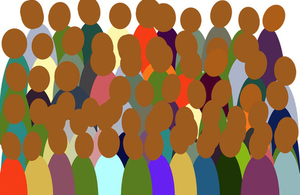The young ones: how do young people’s lives now differ from previous generations’?

From the time you start work to getting married and starting a family, how do today’s young people’s lives differ from their parents’ and grandparents’? Iain Bell discusses how ONS has been contributing more insights on the emerging generations, providing better data for policy makers to make the right decisions.
In many ways today’s young people have never had it so good – they travel the world, will live longer and healthier lives and harness technology like no generation before.
However, they are more likely to live with their parents, more likely to be in debt, and more likely to feel lonely.
To help better understand the social – and economic – situation of our nation’s young people we need better data on how they are living their lives, so policy makers have the information they need to make the right decisions. This is exactly why at the Office for National Statistics we’re doing more to contribute insights on the emerging generation and shining a light on the hurdles and opportunities they face in their journey to adulthood.
“The aim of all this work is to ensure politicians, community leaders and charities have the right information to provide young people with the support they need…”
Our latest article looks ahead on the journey to adulthood. The age you’re most likely to leave home, start a family and buy a house. Of course, no two people are the same or have the same life experiences, but data helps provide policy makers with fresh insights so they are aware of the challenges for young people today and they, in turn, can provide funding for the right services, in the right places.
Take loneliness as an example. There was a commonly held view that loneliness was something only experienced by older generations. But our work showed that 16-24-year-olds were almost three times more likely to be lonely as those aged 65 and over. It also showed differences within younger cohorts; younger children and those who received free school meals were more likely to report feeling lonely, as were children who lived in cities as opposed to towns and villages.
It helped inform the government’s loneliness strategy, announced by the Prime Minister in October 2018, and we’ve since been working with the cross-governmental Tackling Loneliness Team and a Loneliness Technical Advisory Group (TAG) to address the data gap on loneliness among children and young people.
“Some of our young people have little sense of where they’re heading”
Last year we also looked at Being 18 in 2018 – their jobs and studies, wellbeing, financial situation, career aspirations and more. Increasingly our work has often been cross-cutting, working in partnership with the likes of NHS Digital, NatCen Social Research and the Children’s Society, using all available data to build a richer picture and a depth of insight.
The aim of all this work – and other projects we’ve got coming up – is to ensure politicians, community leaders and charities have the right information to provide young people with the support they need so they can make informed choices and decisions, and ultimately lead better lives.
Some of our young people have little sense of where they’re heading and have some hard questions to answer – what can we, as a society, do to help? Hopefully ONS statistics can shed light on some of those answers and help young people themselves to make the right decisions for them.
Iain Bell is Deputy National Statistician for Population and Public Policy
